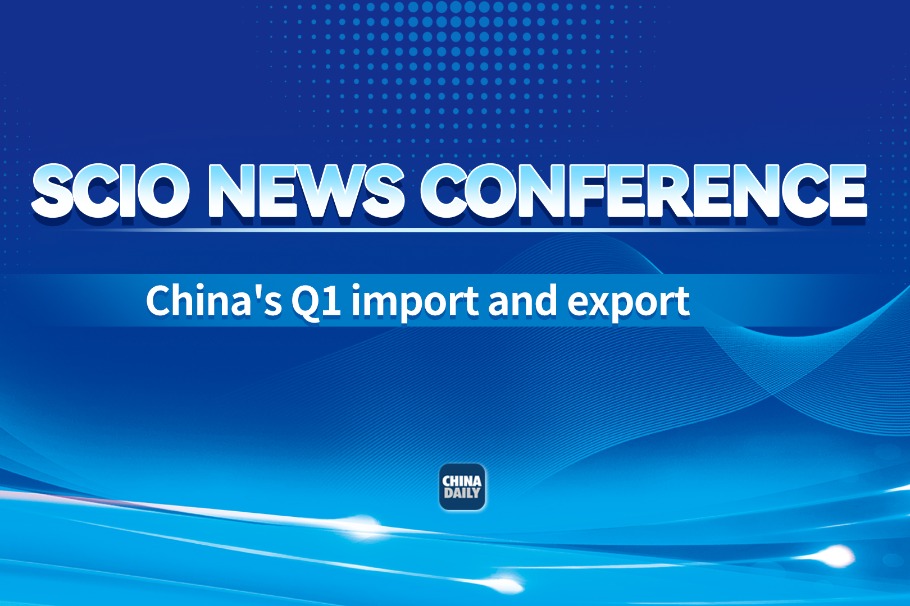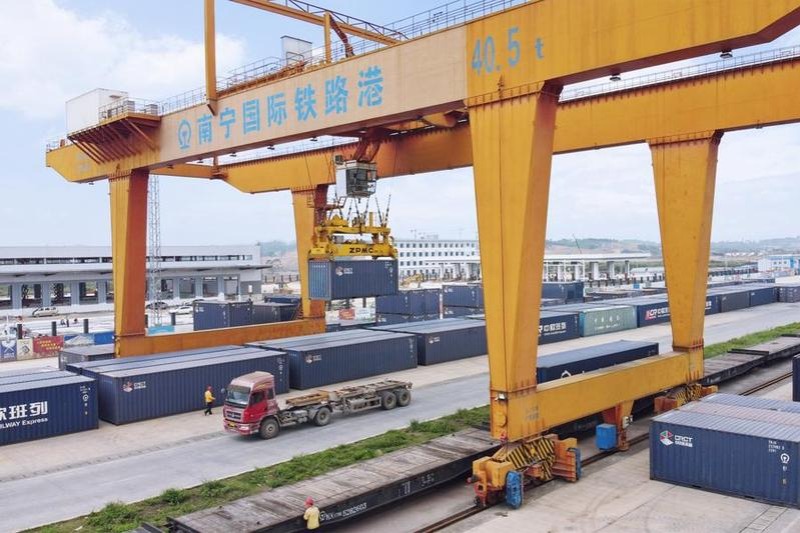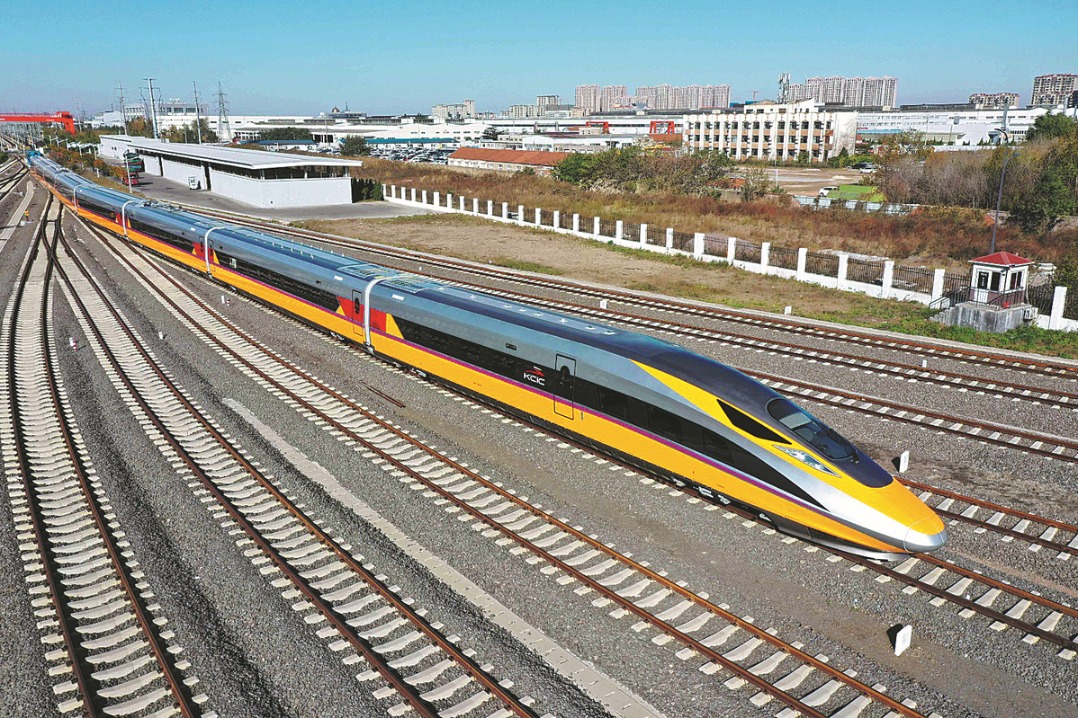Vision for shared prosperity
Malaysia-China partnership offers compelling scope for South-South cooperation in a changing world


In an era marked by geopolitical shifts, economic uncertainty and the urgent need for sustainable development, the concept of South-South cooperation has gained renewed significance. As developing nations grapple with the challenges of a rapidly changing world, partnerships between countries in the Global South have emerged as a vital mechanism for fostering mutual growth, resilience and innovation.
Among these partnerships, the relationship between Malaysia and China stands out as a compelling example of how shared visions and complementary strengths can drive meaningful progress. This collaboration, rooted in historical ties and forward-looking strategies, offers valuable insights into the potential of South-South cooperation to address global challenges.
The Malaysia-China relationship is deeply rooted in centuries of cultural exchanges, trade and migration. The historical maritime Silk Road, which connected China to Southeast Asia, laid the groundwork for enduring ties between the two regions. In modern times, these connections have evolved into a robust partnership characterized by economic interdependence, diplomatic alignment, and cultural affinity. Since establishing diplomatic relations in 1974, Malaysia and China have consistently worked to deepen their collaboration, recognizing the mutual benefits of a strong bilateral relationship.
In recent years, this partnership has been further strengthened by the Belt and Road Initiative, a global infrastructure development initiative that aligns closely with Malaysia's own development goals. Through the BRI, China has invested significantly in Malaysia's infrastructure, including ports, railways and industrial parks, fostering economic growth and regional connectivity. These projects not only enhance Malaysia's position as a key hub in Southeast Asia but also underscore the potential of South-South cooperation to drive tangible development outcomes.
At the heart of Malaysia-China relations is a shared commitment to economic growth and innovation. Both nations recognize the importance of diversifying their economies, embracing digital transformation, and fostering sustainable development. Malaysia's Vision 2020 and its successor, Shared Prosperity Vision 2030, emphasize the need for inclusive growth, technological advancement, and environmental sustainability — objectives that resonate with China's own development agenda.
China's expertise in technology and innovation has been a key driver of collaboration between the two countries. From e-commerce and fintech to artificial intelligence and green energy, Chinese companies have partnered with Malaysian companies to accelerate the adoption of cutting-edge technologies. For instance, Alibaba's investment in Malaysia's Digital Free Trade Zone has positioned the country as a regional leader in e-commerce, enabling small and medium-sized enterprises to access global markets. Similarly, collaborations in renewable energy, such as solar and hydropower projects, highlight the potential for South-South cooperation to address climate change and promote sustainable development.
In a world increasingly shaped by geopolitical competition, Malaysia and China have demonstrated the importance of maintaining a balanced and pragmatic approach to international relations. As a small but strategically significant nation, Malaysia has long pursued a foreign policy of neutrality and nonalignment, seeking to maximize its economic opportunities while safeguarding its sovereignty. This approach has enabled Malaysia to engage constructively with China, even as it navigates the complexities of the rivalry between China and the United States.
China, for its part, has consistently emphasized the principles of mutual respect, non-interference, and win-win cooperation in its dealings with Malaysia. These principles align closely with the ethos of South-South cooperation, which prioritizes equality and mutual benefit over dominance and dependency. By fostering a relationship based on trust and shared interests, Malaysia and China have set an example for how developing nations can collaborate effectively in a multipolar world.
Beyond economic and geopolitical dimensions, the Malaysia-China partnership is underpinned by strong people-to-people ties. The Chinese diaspora in Malaysia, which constitutes a significant portion of the population, has played a crucial role in bridging the two nations. Cultural exchanges, educational collaborations and tourism have further strengthened these connections, fostering mutual understanding and goodwill.
Educational initiatives, such as the establishment of Xiamen University Malaysia, exemplify the potential of South-South cooperation to build human capital and promote knowledge sharing. By providing Malaysian students with access to high-quality education and research opportunities, such initiatives contribute to the development of a skilled workforce capable of driving innovation and growth. Similarly, the growing number of Chinese tourists visiting Malaysia has boosted the local economy while deepening cultural ties between the two nations.
As Malaysia and China look to the future, their partnership is poised to play an increasingly important role in shaping the trajectory of South-South cooperation. However, this collaboration is not without its challenges. Issues such as trade imbalances, concerns over debt sustainability, and differing political systems require careful management to ensure that the relationship remains mutually beneficial. Both nations must also navigate the broader geopolitical landscape, balancing their bilateral ties with the need to engage constructively with other regional and global actors.
Despite these challenges, the Malaysia-China partnership offers a compelling blueprint for South-South cooperation in a changing world. By leveraging their complementary strengths, fostering innovation, and prioritizing mutual respect, Malaysia and China have demonstrated how developing nations can work together to achieve shared prosperity. As the world grapples with pressing challenges such as climate change, economic inequality and technological disruption, the principles underpinning this partnership — collaboration, inclusivity and sustainability — will be more important than ever.
In a world marked by uncertainty and transformation, South-South cooperation represents a beacon of hope and opportunity. The partnership between Malaysia and China exemplifies the potential of such collaboration to drive economic growth, foster innovation, and address global challenges. By building on their shared visions and deepening their ties, Malaysia and China can not only enhance their own development but also contribute to a more equitable and sustainable world. As the Global South continues to rise, the Malaysia-China partnership serves as a powerful reminder of what can be achieved when nations come together in pursuit of common goals.

The author is president of the Malaysia-China Friendship Association and former Malaysian ambassador to China. The author contributed this article to China Watch, a think tank powered by China Daily.
Contact the editor at editor@chinawatch.cn.

































